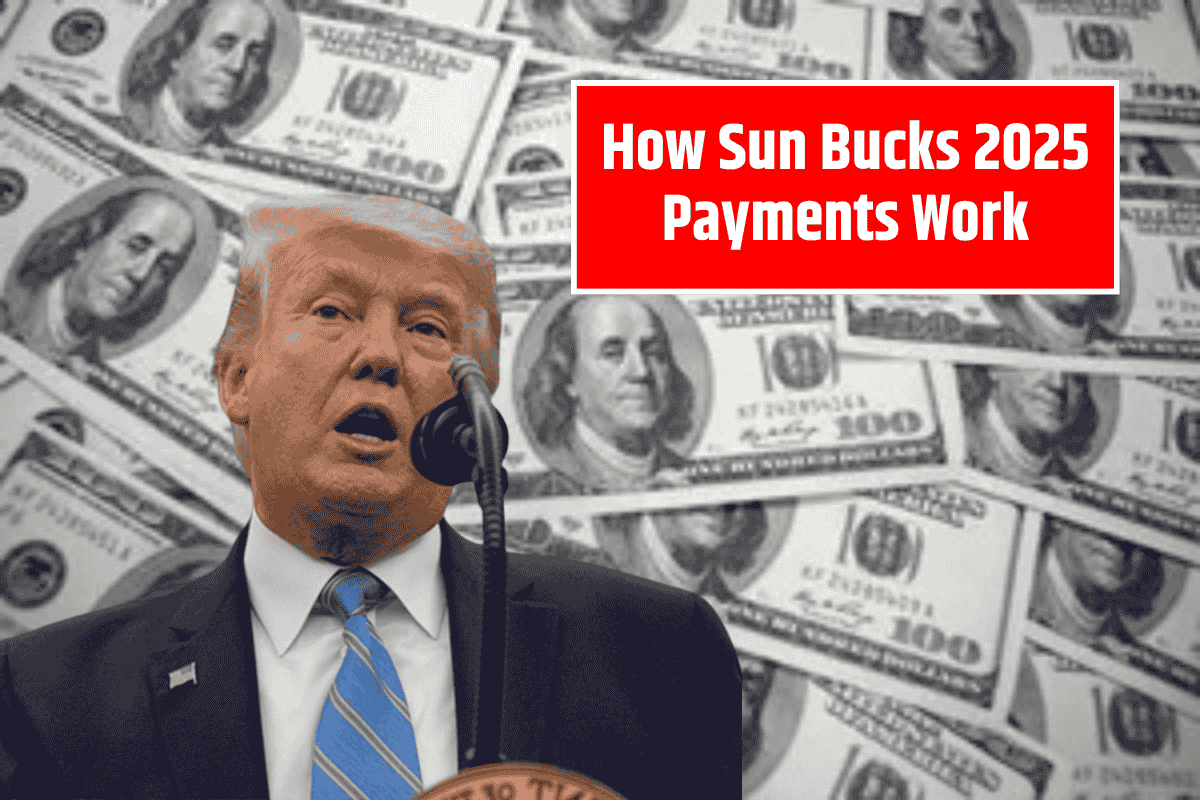The Summer EBT program, also known as SUN Bucks in several states, continues to be a key initiative in 2025, providing food assistance to low-income families during the summer months when children lose access to subsidized school meals.
The program is a complementary initiative to the Supplemental Nutrition Assistance Program (SNAP), and aims to support families by giving them the resources needed to feed their children when school meals aren’t available.
The Summer EBT program operates through an Electronic Benefit Transfer (EBT) card that deposits a lump sum of money for each eligible child.
The funds can be used at authorized supermarkets, farmers’ markets, and online retailers to purchase foods like fruits, vegetables, meats, dairy, and grains. However, the program excludes hot meals, cleaning products, and non-food items.
Who is Eligible for SUN Bucks?
The primary beneficiaries of the program are families with school-age children who meet specific income guidelines. These guidelines are often based on participation in other government programs such as:
SNAP (Supplemental Nutrition Assistance Program)
TANF (Temporary Assistance for Needy Families)
FDPIR (Food Distribution Program on Indian Reservations)
Medicaid
Eligibility for free or reduced-price meals under the National School Lunch Program (NSLP)
In many cases, families who qualify for these programs are automatically enrolled in the Summer EBT program. However, those who do not automatically receive the benefits may need to apply.
No specific immigration status is required for participation, and the program is available in most states and territories in the U.S., though not in all jurisdictions.
How Much Can Families Expect to Receive?
The amount of the Summer EBT benefit varies by location, but the standard amount for 2025 is $120 per child in the continental U.S., which equals about $40 per month in June, July, and August. However, certain states offer different amounts:
Alaska: The benefit varies between $156 and $243.
Hawaii: Eligible children receive $177.
The program has been rolled out in several states, including Arizona, California, Kentucky, Michigan, and New York, with specific dates for benefit distribution and different ways to apply depending on the state.
Breakdown of How Different States Handle SUN Bucks
Here are some examples of how different states are managing their SUN Bucks program in 2025:
Arizona
Arizona operates the program under the SUN Bucks name, with automatic benefits for children who participated in the NSLP during the 2023-2024 school year, as well as children from households receiving SNAP, TANF, Medicaid (up to 185% of the poverty level), foster care, or migrant programs.
If you don’t meet these criteria, you can apply for the benefit until August 5, 2025. The benefit is $120 per child.
Hawaii
In Hawaii, the Department of Human Services administers the program, providing $177 per child. Automatic eligibility applies to children in households receiving SNAP/TANF, foster care, homeless, migrant, or approved for subsidized school meals. Students in schools with CEP programs must apply by August 3, 2025.
California
California’s program also falls under SUN Bucks, with automatic enrollment for CalFresh, CalWORKs, and Medi-Cal recipients, as well as children in foster care or experiencing homelessness. The state distributes a one-time payment of $120 on new or existing EBT cards.
Michigan
Michigan has reactivated the program for 2025, with applications available through August 31. Eligible children will receive $120 loaded onto existing Bridge cards or new ones, and these funds must be used within 122 days of issuance.
New York
New York’s SUN Bucks began deposits on June 18, 2025, for households receiving SNAP, TANF, Medicaid, or NSLP. Other applicants can apply online until August 15 if they did not receive notification.
Other States with Active Summer EBT Programs
Other states and territories have also implemented the SUN Bucks program for 2025, including:
Nevada: Requires manual applications by August 10 for those not automatically eligible, with benefits of $120 per child.
Ohio: Automatic enrollment for SNAP, Medicaid, or OWF recipients, with an August 15 application deadline.
Pennsylvania: Issuance scheduled for August 2025, with online or paper applications.
Virginia: Manages one-time payments through its Virginia SUN Bucks platform.
Minnesota: Those not automatically eligible can apply until August 31, receiving email notification within two weeks.
SUN Bucks Availability by State and Territory
The SUN Bucks program is available in many states, territories, and tribal nations, including:
Alabama, Arizona, California, Colorado, Florida, Hawaii, Illinois, Kentucky, Michigan, New York, Ohio, Pennsylvania, Rhode Island, Texas, and many more.
The USDA and state-level programs have made it easier for low-income families with school-aged children to access necessary food assistance, especially during the summer months. The Summer EBT/SUN Bucks program is a critical part of this support, offering flexibility, simplicity, and direct help when families need it most.
Key Takeaways
$120 per child is the standard benefit, though amounts vary by state.
Eligibility is automatic for most families already enrolled in programs like SNAP, TANF, or Medicaid.
The program is designed to help low-income families with school-aged children by providing food assistance during the summer months when free or reduced-price school meals are unavailable.
There are no specific immigration status requirements for families to participate, and the program is available in many U.S. states, territories, and tribal nations.
This initiative plays a significant role in helping families navigate the summer months when children are not in school and may face food insecurity. Families should stay updated on local deadlines and make sure to apply if they are not automatically enrolled.
